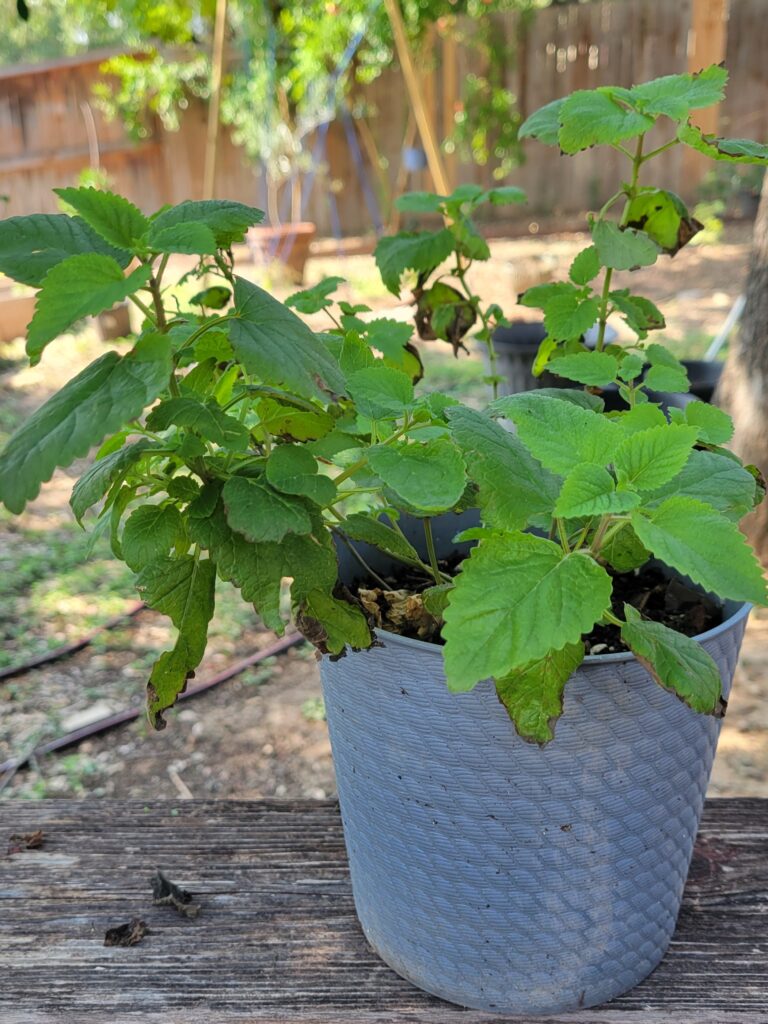Bay Laurel

Bay leaves add earthy flavor to stews, soups and sauces. Dry leaves for fragrant wreathes and garlands. Attractive ornamental shrub is well adapted to serve as a houseplant, as well as outdoors. Plant’s dark-green leaves are strikingly fragrant, especially once dried.
A classic ingredient in the traditional French “bouquet garni”, bay leaves add earthy flavor to stews, soups and sauces. Use bay leaves for fragrant wreathes and garlands.
- Repot as necessary; can be a little rootbound.
- Put a potted bay laurel plant in a sunny window, one that is south- or west-facing. Outside, it should be placed in partial shade.
- Plant in average, well-draining soil. When grown in a container (as it usually is), use a general-purpose potting mix.
- Water so that the soil stays moist.
- Moved potted bay laurels between indoor and outdoor locations as seasonal weather dictates.
- Toxic to animals.
| Item | Description |
|---|---|
| Zone | 8 – 10 |
| Planting Season | Spring |
| Plant Depth | .25 |
| Fertilizer Type | 4-6-8 |
| Light Requirements | Full Sun |
| Fragrant | y |
| Edible Parts | Leaves |
| Size | 10′ – 60′ |
| Foliage Color | Green |
| Fruit Color | N/A |
| Propagation | 28 – 56 |
| Maturity | 6″ – 24″/year |
| Spacing | 10′ – 20′ |
| Determinate/Indeterminate | Indeterminate |
| Hybrid/Open Pollinated | Open Pollinated |
| Genus | Laurus |
| Species | nobilis |
| Subspecies | Bay Laurel |
| Common Name | Tree, Bay Laurel |
- Pruning a bay laurel is straightforward and done to control the size and shape of your plant. New dense growth will emerge from wherever you snip off the branches. Pruning is best done when the tree is not actively growing, from late winter to early spring before new growth emerges.3 You can prune as much or as little as you like to keep the tree small or to create a topiary artwork.
- Bay laurel makes a popular container plant that can live for decades. To keep its size in check, use a relatively small container but one with a broad enough base to prevent the tree from toppling over in the wind. A 24-inch pot will accommodate a 5- to 6-foot tree. Grow the plant in ordinary commercial potting mix.
- Bay laurel grows best when it’s a little cramped in its pot, even to the point of roots starting to poke out the bottom. You shouldn’t need to repot more than once every five years.
- Potted plants moved outdoors for summer should be brought indoors as temperatures begin to dip below 50°F. A plant that grows fine in a partial shade outdoor location will want more sunlight in the winter—give it a sunny window or patio door.
- In warm-weather zones where your bay laurel is growing in the landscape, no winter protection is needed, though fall and winter are good times to do any pruning.
- Bay laurel is relatively easy to propagate by rooting softwood cuttings. This is a slow-growing plant, so be patient. You’ll need a small hand pruner, small pots, coarse sand, rooting hormone, and plastic coverings. Then follow these steps.
- In summer, use sterile pruners to take 6-inch cuttings from green, pliable branches.
- Fill small pots with coarse, moist sand, then dip the tip of each cutting into rooting hormone, and plant it in its container.
- Cover containers loosely with plastic, securing it with rubber bands.
- Place containers in a warm location with bright indirect light.
- Within a month or two roots should develop. Tug gently on the cutting and if you feel resistance roots have formed. Remove plastic covering and continue growing the cuttings until they are large enough for a permanent pot or an outdoor garden location.
- July 21, 2024 – Repotted in 10″ pot,
- April 23, 2024 – Bought 4″ pot, 12″ Tall, Rainbow Gardens ($16.99)
References


